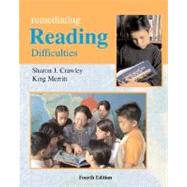
| Preface | xi | ||||
|
1 | (22) | |||
|
3 | (3) | |||
|
6 | (8) | |||
|
14 | (9) | |||
|
15 | (3) | |||
|
18 | (2) | |||
|
20 | (2) | |||
|
22 | (1) | |||
|
23 | (26) | |||
|
25 | (10) | |||
|
35 | (2) | |||
|
37 | (9) | |||
|
38 | (4) | |||
|
42 | (4) | |||
|
46 | (3) | |||
|
49 | (36) | |||
|
53 | (8) | |||
|
54 | (1) | |||
|
55 | (1) | |||
|
56 | (2) | |||
|
58 | (1) | |||
|
59 | (2) | |||
|
61 | (8) | |||
|
61 | (2) | |||
|
63 | (3) | |||
|
66 | (3) | |||
|
69 | (4) | |||
|
73 | (5) | |||
|
74 | (1) | |||
|
75 | (1) | |||
|
76 | (2) | |||
|
78 | (7) | |||
|
85 | (26) | |||
|
89 | (7) | |||
|
90 | (1) | |||
|
91 | (1) | |||
|
92 | (1) | |||
|
92 | (1) | |||
|
93 | (1) | |||
|
93 | (1) | |||
|
94 | (2) | |||
|
96 | (11) | |||
|
97 | (2) | |||
|
99 | (1) | |||
|
100 | (2) | |||
|
102 | (1) | |||
|
103 | (2) | |||
|
105 | (2) | |||
|
107 | (4) | |||
|
107 | (1) | |||
|
108 | (1) | |||
|
109 | (2) | |||
|
111 | (52) | |||
|
115 | (5) | |||
|
116 | (1) | |||
|
117 | (1) | |||
|
117 | (1) | |||
|
118 | (1) | |||
|
119 | (1) | |||
|
120 | (23) | |||
|
121 | (7) | |||
|
128 | (4) | |||
|
132 | (4) | |||
|
136 | (2) | |||
|
138 | (2) | |||
|
140 | (3) | |||
|
143 | (14) | |||
|
143 | (5) | |||
|
148 | (3) | |||
|
151 | (2) | |||
|
153 | (4) | |||
|
157 | (6) | |||
|
158 | (1) | |||
|
159 | (1) | |||
|
160 | (1) | |||
|
160 | (1) | |||
|
161 | (2) | |||
|
163 | (16) | |||
|
165 | (6) | |||
|
166 | (1) | |||
|
167 | (1) | |||
|
168 | (1) | |||
|
169 | (2) | |||
|
171 | (4) | |||
|
171 | (1) | |||
|
172 | (1) | |||
|
173 | (1) | |||
|
173 | (2) | |||
|
175 | (4) | |||
|
179 | (20) | |||
|
181 | (2) | |||
|
183 | (9) | |||
|
184 | (6) | |||
|
190 | (1) | |||
|
191 | (1) | |||
|
192 | (7) | |||
|
192 | (1) | |||
|
193 | (2) | |||
|
195 | (1) | |||
|
196 | (3) | |||
|
199 | (12) | |||
|
201 | (2) | |||
|
203 | (2) | |||
|
205 | (3) | |||
|
208 | (3) | |||
|
211 | (2) | |||
|
213 | (5) | |||
|
213 | (1) | |||
|
214 | (4) | |||
|
218 | (1) | |||
|
218 | (1) | |||
|
219 | ||||
| Appendix A Major Word Analysis Generalizations | 1 | (6) | |||
| Appendix B Word Lists for Word Analysis Elements | 7 | (17) | |||
| Appendix C Common Phonograms (Rimes) | 24 | (7) | |||
| Appendix D Developing a Teaching Kit | 31 | (2) | |||
| Appendix E Caldecott, Newbery, and Coretta Scott King Award-Winning Books | 33 | (6) | |||
| Appendix F Trade Books for Challenged Readers | 39 | (16) | |||
| Appendix G Commercial Books, Kits, and Workbooks for Instruction | 55 | (20) | |||
| Appendix H Multimedia, Including Games, Software, Electronics, and Writing Activities | 75 | (10) | |||
| Appendix I Publishing Companies | 85 | ||||
| References | 1 | (1) | |||
| Index | 1 |
The New copy of this book will include any supplemental materials advertised. Please check the title of the book to determine if it should include any access cards, study guides, lab manuals, CDs, etc.
The Used, Rental and eBook copies of this book are not guaranteed to include any supplemental materials. Typically, only the book itself is included. This is true even if the title states it includes any access cards, study guides, lab manuals, CDs, etc.